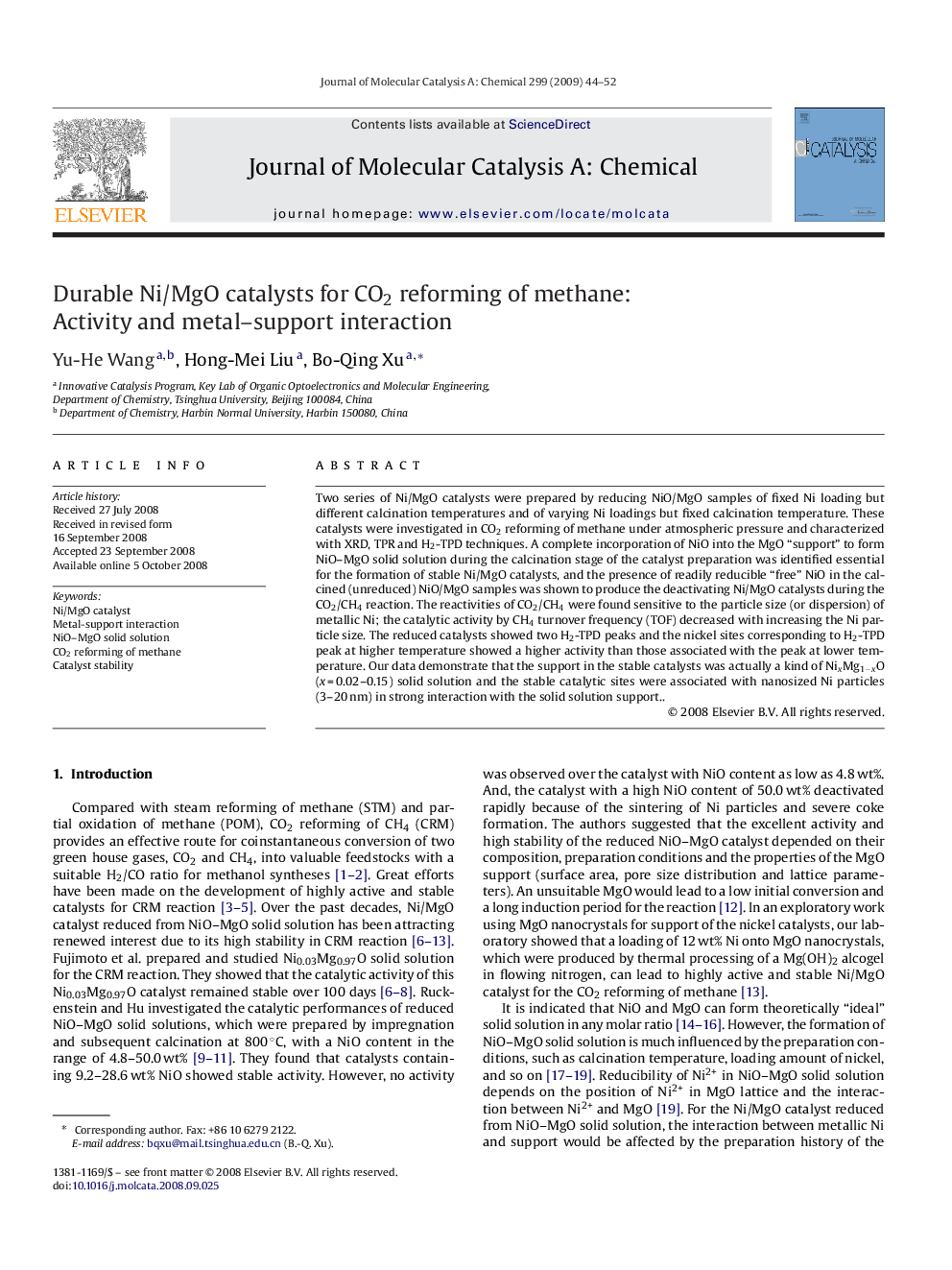| Article ID | Journal | Published Year | Pages | File Type |
|---|---|---|---|---|
| 67189 | Journal of Molecular Catalysis A: Chemical | 2009 | 9 Pages |
Two series of Ni/MgO catalysts were prepared by reducing NiO/MgO samples of fixed Ni loading but different calcination temperatures and of varying Ni loadings but fixed calcination temperature. These catalysts were investigated in CO2 reforming of methane under atmospheric pressure and characterized with XRD, TPR and H2-TPD techniques. A complete incorporation of NiO into the MgO “support” to form NiO–MgO solid solution during the calcination stage of the catalyst preparation was identified essential for the formation of stable Ni/MgO catalysts, and the presence of readily reducible “free” NiO in the calcined (unreduced) NiO/MgO samples was shown to produce the deactivating Ni/MgO catalysts during the CO2/CH4 reaction. The reactivities of CO2/CH4 were found sensitive to the particle size (or dispersion) of metallic Ni; the catalytic activity by CH4 turnover frequency (TOF) decreased with increasing the Ni particle size. The reduced catalysts showed two H2-TPD peaks and the nickel sites corresponding to H2-TPD peak at higher temperature showed a higher activity than those associated with the peak at lower temperature. Our data demonstrate that the support in the stable catalysts was actually a kind of NixMg1−xO (x = 0.02–0.15) solid solution and the stable catalytic sites were associated with nanosized Ni particles (3–20 nm) in strong interaction with the solid solution support..
Graphical abstractTwo series of Ni/MgO catalysts were prepared by reducing NiO/MgO precursors of different calcination temperatures or of different Ni loadings. These catalysts were investigated in CO2 reforming of methane and characterized with XRD, TPR and H2-TPD. The hard reduction of NiO in NiO–MgO solid solution is helpful for the stability of Ni/MgO and the readily reduction NiO in NiO/MgO is responsible for Ni/MgO deactivation.Figure optionsDownload full-size imageDownload as PowerPoint slide
